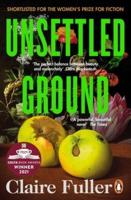Publisher's Synopsis
Finally available, a high quality book of the original classic edition of A History of Wood-Engraving. It was previously published by other bona fide publishers, and is now, after many years, back in print. This is a new and freshly published edition of this culturally important work by George Edward Woodberry, which is now, at last, again available to you. Get the PDF and EPUB NOW as well. Included in your purchase you have A History of Wood-Engraving in EPUB AND PDF format to read on any tablet, eReader, desktop, laptop or smartphone simultaneous - Get it NOW. Enjoy this classic work today. These selected paragraphs distill the contents and give you a quick look inside A History of Wood-Engraving:Look inside the book: These pictures were on single leaves of paper; the outlines were printed from engraved wood-blocks, but occasionally, it is believed, from metal plates cut in relief; they were taken off in a pale, brownish ink by rubbing on the back of the paper with a burnisher, and sometimes in black ink and with a press; they were then colored, either by hand or by means of a stencil plate, in order to make them more attractive to the people. ...Rude as they were, the poor German peasant or humble artisan of the great industrial cities cared for them; they had been given to him by the monks, like the rudely-carved wooden images of earlier times, at the end of some pilgrimage that he had made for penance or devotion, and were treasured by him as a precious memento; or some preaching friar, to whom he had devoutly given a small alms for the building of a church or the decoration of a shrine, had rewarded his piety with a picture of the saint whom, so far as he could, he had honored; or he had received them on some day of festival, when in the streets of the Flemish cities the Lazarists or other orders of monks had marched in grand procession, scattering these brilliantly colored prints among the populace. ...The confusion of medival life, it is true, was still there-fierce temper in the artisans, blood-thirstiness in the soldiery, everywhere the pitilessness of military force, wielded by a proud and selfish caste, as Froissart and Philippe de Comyns plainly recount; but there, nevertheless-although the brutal sack of Liege was yet to take place-modern life was beginning; merchant-life, supported by trade, citizen-life, made possible by the high organization of the great guilds, had begun, although the merchant and the citizen must still wear the sword; art, under the guidance of the Van Eycks, was passing out of medival conventionalism, out of the monastery and the monkish tradition, to deal no longer with lank, meagre, martyr-like bodies, to care no more for the moral lesson in contempt of artistic beauty, to come face to face with nature and humanity as they really were before men's eyes; and modern intellectual life, too-faint and feeble, no doubt-was nevertheless beginning to show signs of its presence there, where in after-times great thinkers were to find a harbor of refuge, and the most heroic struggle of freedom was to be fought out against Spain and Rome. About George Edward Woodberry, the Author: In 1880 he was recalled to Nebraska, where for two years he held the English professorship; but at the end of that time, together with several associates in the Faculty, he was dismissed from his chair, as a result of one of those contests usual in the early life of Western colleges. ...One year later was published his Edgar Allan Poe, one of the marked successes of the 'American Men of Letters Series', and the work by which its author is perhaps most widely known.








